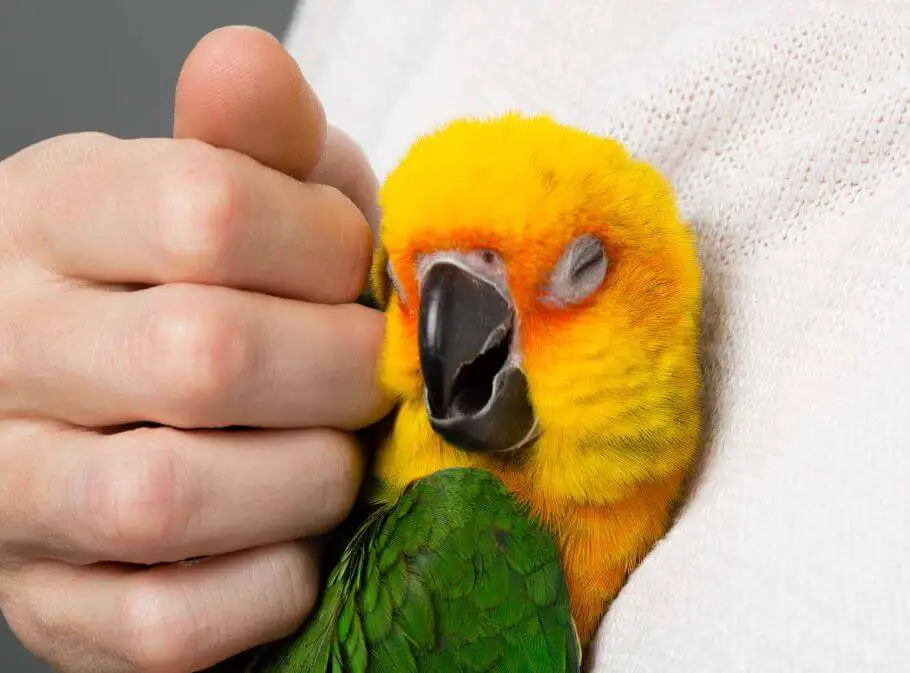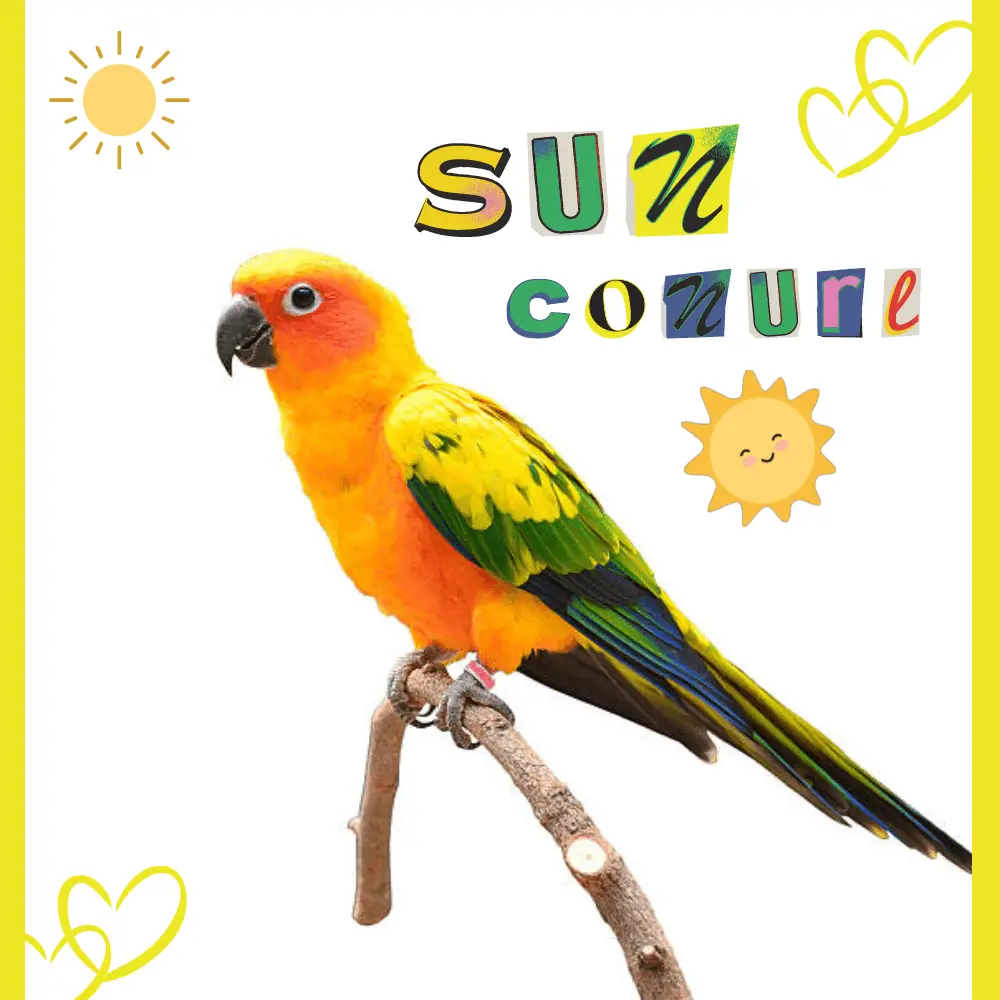The sun conure ( Aratinga solstitialis ) is a South American parrot.
Description
Although its plumage is predominantly yellow, its also has other colors: orange shade on the face and belly, green primary and secondary coverts, just like the flight feathers with blue ends.
The irises are brown, the eye-rings, beak, and legs black. It may have a reddish plumage which is rare and more expensive in the market. The sun conure cries and can say a few words depending on its interest in speech.
Sun conure size
This species measures about 30 cm.
Sun conure personality
The 30 cm long parrot is usually colored yellow, orange, and red, the wings and tail are green, shimmering slightly dark blue.
The plumage of the young birds is initially green-yellow interspersed, the full coloring takes place at about 9 months.
The flight is fast and straight. The average life expectancy of this parrot is around 20-30 years.
Sun conure food
Like other conures, this bird consumes fruits, nuts, and seeds but it also ingests flowers.
Sun conure habitat
The bird lives in sparse forests, palm groves, and savannahs in northeastern Brazil, French Guiana, and Venezuela.
Inventory situation
According to the IUCN ” Red List “, the population was until recently still considered to be common, and thus the Sun Parakeet had a threat level of LC ( least concern ). In May 2008 it was upgraded to EN ( endangered ).
For comparison: The Hyacinth Macaw, the Imperial Amazon, or the Jenday Conure can also be found there. The population is estimated at only 1,000 to 2,500 animals with a strong downward trend.
Sun conure behavior

sun conure adoption
SOURCE: SaltyDIY
Sun conure Reproduction
It can reproduce all year round, but mates primarily in the spring. The bird breeds in loose colonies and builds its nest in cavities of palms or other trees.

sun conure female
The female incubates three or four eggs for around 23 days. The fledglings, which fledge at about 50 days, usually stay with their parents for quite a while after that and become sexually mature at about two years.
Captivity
The sun parakeet, by its very attractive color, is the most common species of the genus Aratinga in captivity.
Until 1971, it was still unknown in Europe, but since then it has been successfully bred and reproduced.
In captivity, there are two mutations, the most common is the red factor sun conure and the rarest is the yellow (variegated) mutation.
The “yellow mutation” has entirely yellow plumage with a tinge of orange on the face and belly. Its beak is shaded with white and its legs are white.


